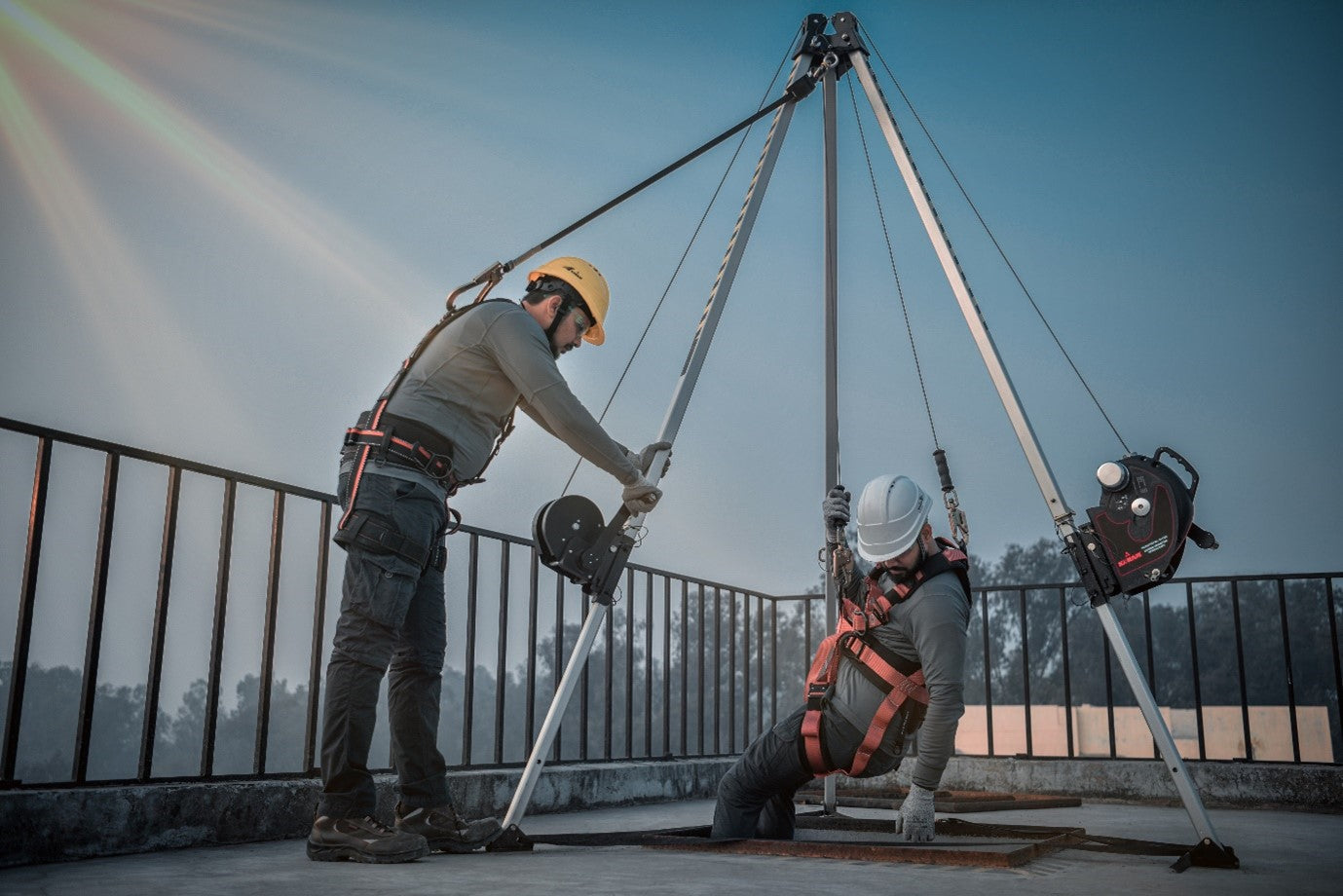In this blog, we’ll break down everything you need to know about confined spaces, from their definition to the safety measures required to work in them. Understanding confined spaces and identifying them correctly ensures compliance with safety regulations and prevents potentially life-threatening hazards.
Definition of a Confined Space
A confined space is more than just a small or cramped area. According to Occupational Safety and Health Regulations, a confined space is defined as an enclosed or partially enclosed area that:
- Is not intended or designed primarily for human occupancy.
- Operates at atmospheric pressure during entry.
- Has restricted means for entry and exit.
Additionally, a confined space:
- May have an atmosphere containing or likely to contain harmful contaminants.
- Might have unsafe oxygen levels.
- Could have a nature that increases the likelihood of occupants being overwhelmed by an unsafe atmosphere or contaminants.
These criteria make it essential to accurately identify confined spaces, as misidentification can lead to workers entering them without the necessary precautions. Poor ventilation in confined spaces can allow hazardous atmospheres to develop quickly, often unpredictably. Proper planning and preparation are critical to ensure safe and efficient work.
Why Do People Enter Confined Spaces?
Confined spaces often serve critical roles in various industries. Some common reasons for entering confined spaces include:
- Cleaning and waste removal.
- Conducting repair work, such as welding or cutting.
- Installing or maintaining equipment like pumps and motors.
- Applying surface coatings, painting, or sandblasting.
- Inspecting meters, gauges, and dials.
- Installing, repairing, or inspecting telephone, electrical, or fibre-optic cables.
- Performing maintenance on steam, water, or sewage systems.
- Constructing confined spaces, such as industrial boilers.
While the reasons vary, all require stringent safety measures to protect workers from the inherent risks associated with confined spaces.
What Do You Need to Work in a Confined Space?
Confined Space Training
To legally and safely work in a confined space, you must complete proper training. Confined space training courses are designed to equip workers with the knowledge and skills necessary to handle these environments. Training covers:
- Working in confined spaces.
- Relevant legislation and compliance requirements.
- Hazard identification and control measures.
- Using and issuing entry permits.
- Planning and preparing for confined space work.
- Safe entry and exit procedures.
Completing this training ensures workers understand the risks involved and how to mitigate them effectively.
Work Permits
In addition to training, a confined space entry permit is mandatory. This formal document confirms that all safety measures are in place before work begins. The permit includes essential details such as:
- Location and description of the confined space.
- Names of authorised workers and the duration of work.
- Identified hazards and corresponding risk control measures.
- Atmospheric testing and monitoring requirements.
- Emergency response and rescue plans.
Confined space permits also act as a communication tool between site management, supervisors, and workers, ensuring that all parties are aligned on safety protocols.
Safety Measures for Confined Space Work
Working in confined spaces requires adherence to a robust safety plan. Key safety measures include:
Hazard Identification
Before entry, all potential hazards must be identified. Common risks include:
- Toxic gases or harmful contaminants.
- Low or high oxygen levels.
- Flammable atmospheres.
- Physical hazards like engulfment or entrapment.
Conducting a thorough risk assessment is essential for outlining control measures.
Atmospheric Testing
Monitoring the air quality inside a confined space is critical. Testing for oxygen levels, flammable gases, and toxic substances ensures the environment is safe for entry. Continuous monitoring is often required as conditions can change rapidly.
Personal Protective Equipment (PPE)
The right PPE is non-negotiable. Depending on the hazards, this may include:
- Respiratory protection.
- Protective suits or coveralls.
- Safety helmets, gloves, and boots.
- Harnesses and fall protection equipment.
Standby Personnel
A trained standby person must always be present during confined space work. Their role includes:
- Maintaining communication with workers inside the confined space.
- Monitoring conditions and initiating emergency procedures if needed.
- Keeping a log of personnel entering and exiting the space.
Emergency Response Plan
An effective rescue plan is a critical component of confined space safety. The plan should outline:
- Emergency equipment and its location.
- Rescue procedures tailored to the specific confined space.
- Roles and responsibilities of the rescue team.
Regular drills help ensure all team members are prepared for real emergencies.
Choosing the Right Equipment for Confined Spaces
At Absafe, we specialise in providing high-quality equipment tailored for confined spaces. Our range includes:
- Gas detectors and atmospheric monitors.
- Ventilation systems and blowers.
- Safety harnesses and fall protection gear.
- Rescue and retrieval equipment.
- Personal protective equipment (PPE).
All our equipment meets industry standards and is designed to support safe and efficient operations in confined spaces.
For more information or to explore our range of confined space equipment, contact Absafe today.

